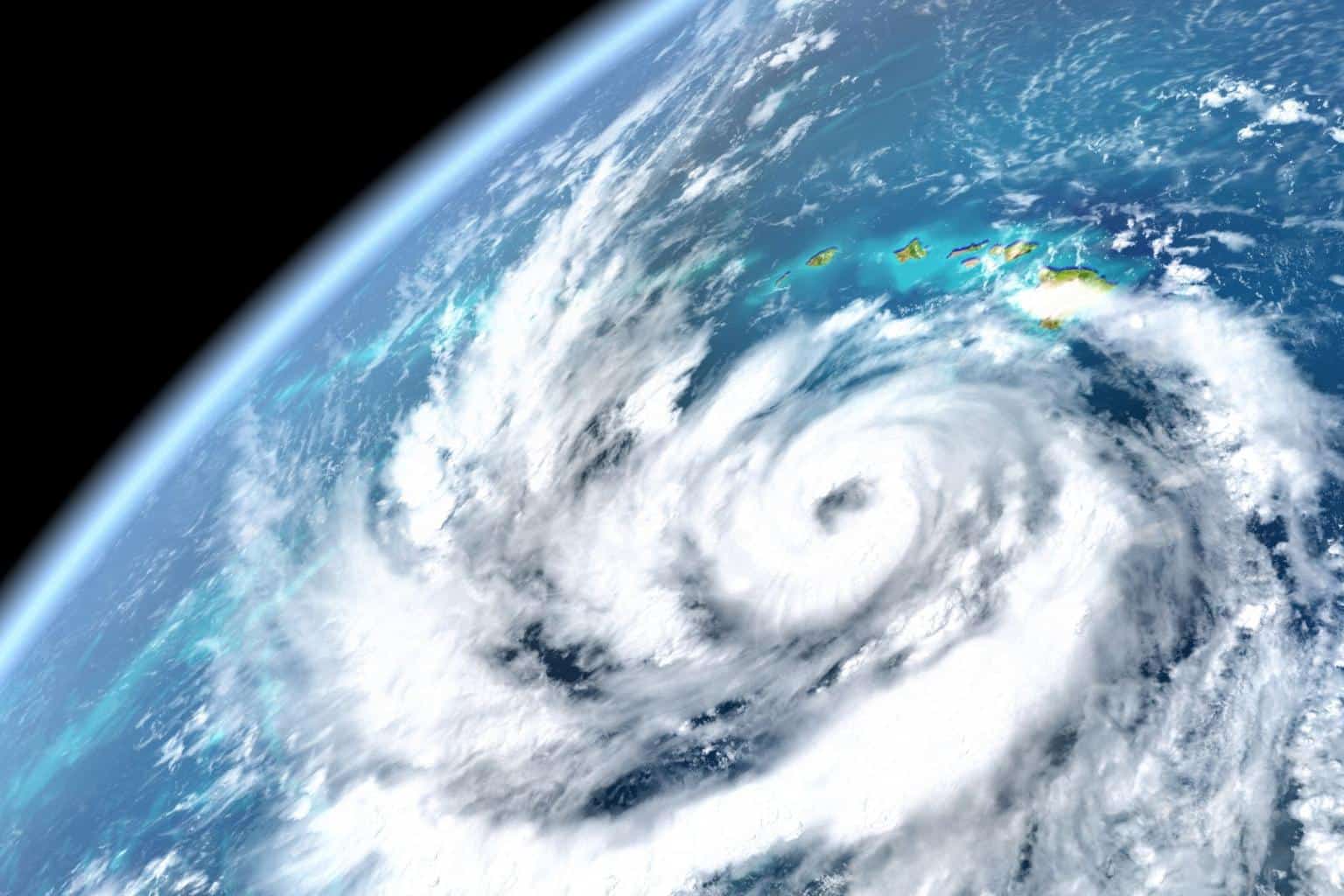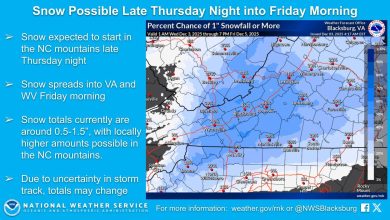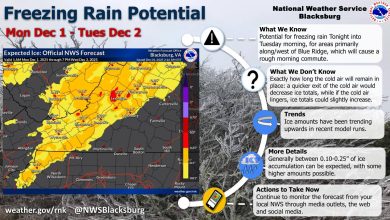
Last Updated on April 3, 2025 11:02 am
The WMO Hurricane Committee has retired the names Beryl, Helene and Milton from its Atlantic basin name list and John from the eastern Pacific basin name list because of the death and destruction these storms caused in 2024.
Key messages
- Beryl, Helene and Milton are retired as Atlantic hurricane names
- Brianna, Holly and Miguel will replace them on the rotating list
- John is retired from the eastern Pacific list and replaced by Jake
- Names of deadly and destuctive tropical cyclones are retired
- Tropical cyclones are named for public safety reasons
- Early warnings have reduced death toll
Hurricane Beryl was the earliest Atlantic basin Category-5 hurricane on record, with major impacts in the Caribbean. Hurricanes Helene and Milton caused catastrophic damage in the United States. Hurricane John triggered deadly and extended flooding in the Mexican state of Guerrero.
The names Brianna, Holly and Miguel were selected as replacements in the Atlantic basin and Jake in the eastern Pacific. The lists of names, which are overseen by WMO, help in the communication of storm warnings and to alert people about potentially life-threatening risks. The names are repeated every six years, unless a storm is so deadly that its name is retired.
The naming convention – whilst attracting the most public attention – is only a small part of the life-saving work of the Hurricane Committee, which consists of experts from National Meteorological and Hydrological Services and represents North America, Central America and the Caribbean (WMO Regional Association IV).
“The work of the Hurricane Committee is critical to ensuring that everyone in the region across the Atlantic and east Pacific basins is ready for the upcoming 2025 hurricane season, providing early warnings for all and reducing the impacts to life and property from these dangerous storms,” said Michael Brennan, Chair of the Hurricane Committee and Director of the Regional Meteorological Specialized Center Miami.
“Since 1978, the WMO Hurricane Committee has served as a vital platform for operational collaboration and partnership. Thanks to your dedication, we have saved countless lives and averted many millions of dollars in economic losses. However, it only takes one landfalling hurricane to undermine years of development. Whilst the USA bears the biggest outright economic losses, Small Island Developing States and fragile economies suffer disproportionately,” said WMO Secretary-General Celeste Saulo in a video message to the meeting in San Salvador, El Salvador.
In addition to retiring and replacing hurricane names, the committee updated the Region IV Hurricane Operational Plan, which included an update to the issuance criteria for Potential Tropical Cyclone advisories, allowing the issuance of those forecasts from RSMC Miami up to 72 hours before impacts. That will provide even greater lead time ahead of systems that are expected to develop into a tropical storm or hurricane and impact land.
The 2024 Atlantic hurricane season was the ninth successive season with above average activity, whilst the eastern Pacific season was below average.
The Atlantic basin saw 18 named storms in 2024. Eleven of those were hurricanes (winds of 74 mph or greater) and five intensified to major hurricanes of category 3, 4 or 5 on the Saffir Simpson scale, with winds of 178 kmh/111 mph or higher, according to the US National Oceanic and Atmospheric Administration (NOAA).
Between 1970 and 2021, tropical cyclones (the generic term which includes hurricanes) were the leading cause of both reported human and economic losses worldwide, accounting for more than 2 000 disasters, according to the WMO Atlas of Mortality and Economic Losses from Weather, Climate and Water-related Hazards.
Early warnings by the WMO community and improved disaster risk management have dramatically reduced fatalities, but economic losses are rising. This is why tropical cyclones are one of the main priorities for the international Early Warnings For All initiative.
Hurricane Beryl
Hurricane Beryl was the earliest Atlantic basin Category-5 hurricane on record, with major impacts in the Caribbean.
It made landfall as a Category 4 Hurricane on 1 July in Grenada and its dependencies, Carriacou and Petite Martinique. The torrential rains, huge waves and powerful winds caused severe flooding and widespread devastation on Carriacou and Petite Martinique in Grenada. Significant damage was sustained on Carriacou and Petite Martinique, with upward of 98% of homes damaged or destroyed.
Beryl also affected Jamaica, the Yucatan Peninsula of Mexico, and made a final landfall as a category one hurricane in the United States. Beryl is responsible for 34 direct fatalities across the region.
The loss of life in the most devastated areas was fortunately limited by accurate advance forecasts and coordinated regional and national disaster risk management.
Hurricanes Helene and Milton
Hurricane Helene made landfall as a Category-4 storm on the Florida Gulf Coast on September 26. The storm caused catastrophic flooding across the southern Appalachians, widespread wind damage from the Gulf Coast to the North Carolina mountains and storm surge flooding along portions of west coast of Florida.
Helene was the deadliest hurricane to affect the continental U.S. since Katrina in 2005, with more than 248 fatalities, the majority of which occurred in North Carolina and South Carolina. Damage was estimated at $78.7 billion making it the 7th costliest U.S. hurricane (adjusted to 2024 values).
Hurricane Milton made landfall as a Category-3 hurricane near Siesta Key, Florida, on 9 October. Milton's rate of rapid intensification was among the highest ever observed and at its peak it was category 5 intensity over the Gulf of Mexico.
Milton caused 15 fatalities (12 in the U.S.) and an estimated $34.3 billion in damages. The storm produced a historic and deadly tornado outbreak across Florida.
Hurricane John
Hurricane John made landfall as a category 3 hurricane) in the state of Guerrero, Mexico, on 24 September, and subsequently made a second landfall as a tropical storm in the state of Michocán, Mexico.
John produced extreme amounts of rain and extensive flooding over southern Mexico and was responsible for 29 deaths. It damaged more than 150,000 homes and caused widespread disruption to transport and energy.
At the Acapulco airport 1442.0 mm of rainfall was measured between September 22nd and 27th – more than its total annual average.
It was the third most expensive hurricane striking the Pacific coast of Mexico (US$ 2.45 billion), only behind Otis (2023) and Manuel (2013).
The World Meteorological Organization (WMO) is a specialized agency of the United Nations responsible for promoting international cooperation in atmospheric science and meteorology.
WMO monitors weather, climate, and water resources and provides support to its Members in forecasting and disaster mitigation. The organization is committed to advancing scientific knowledge and improving public safety and well-being through its work.



















